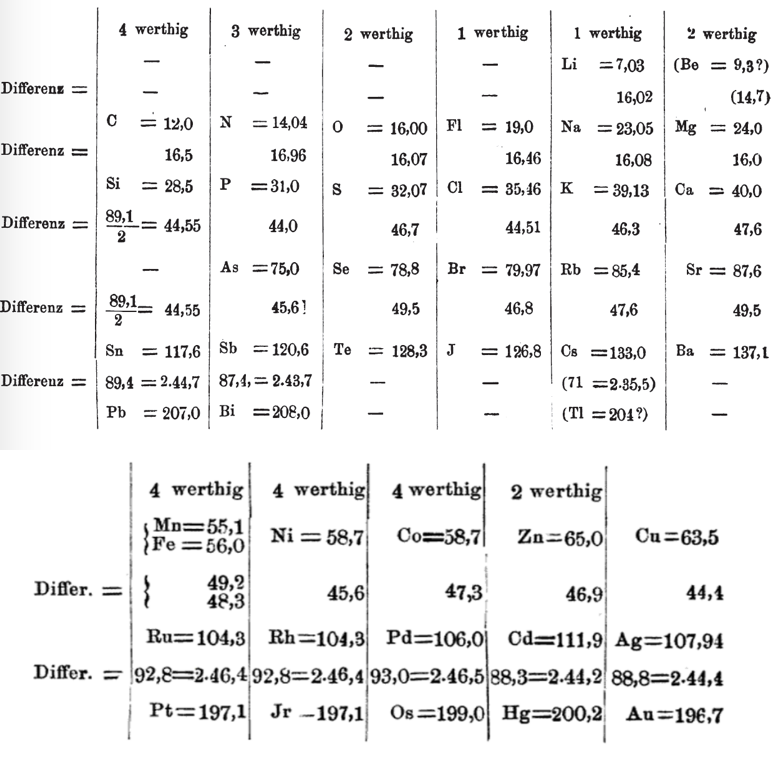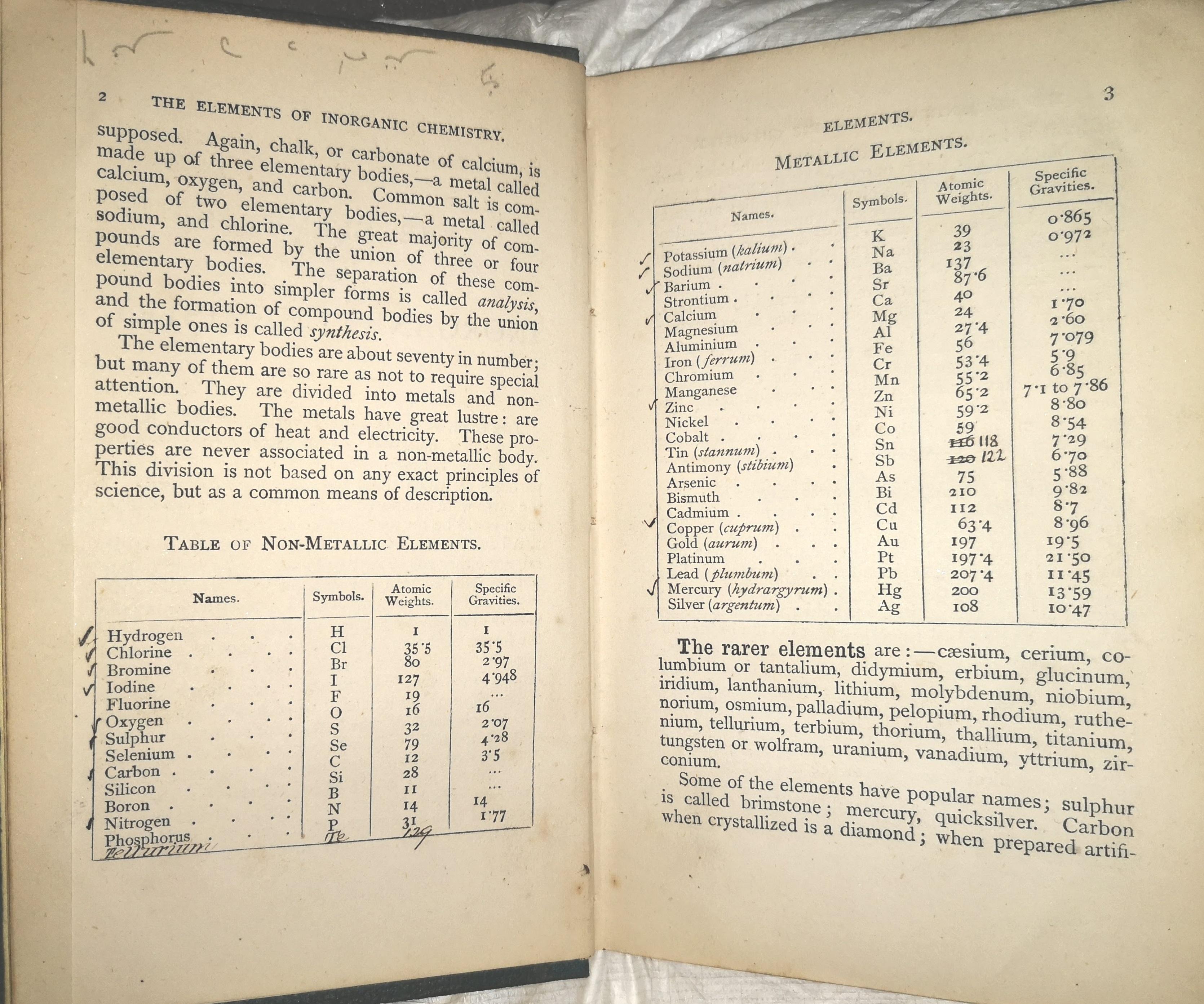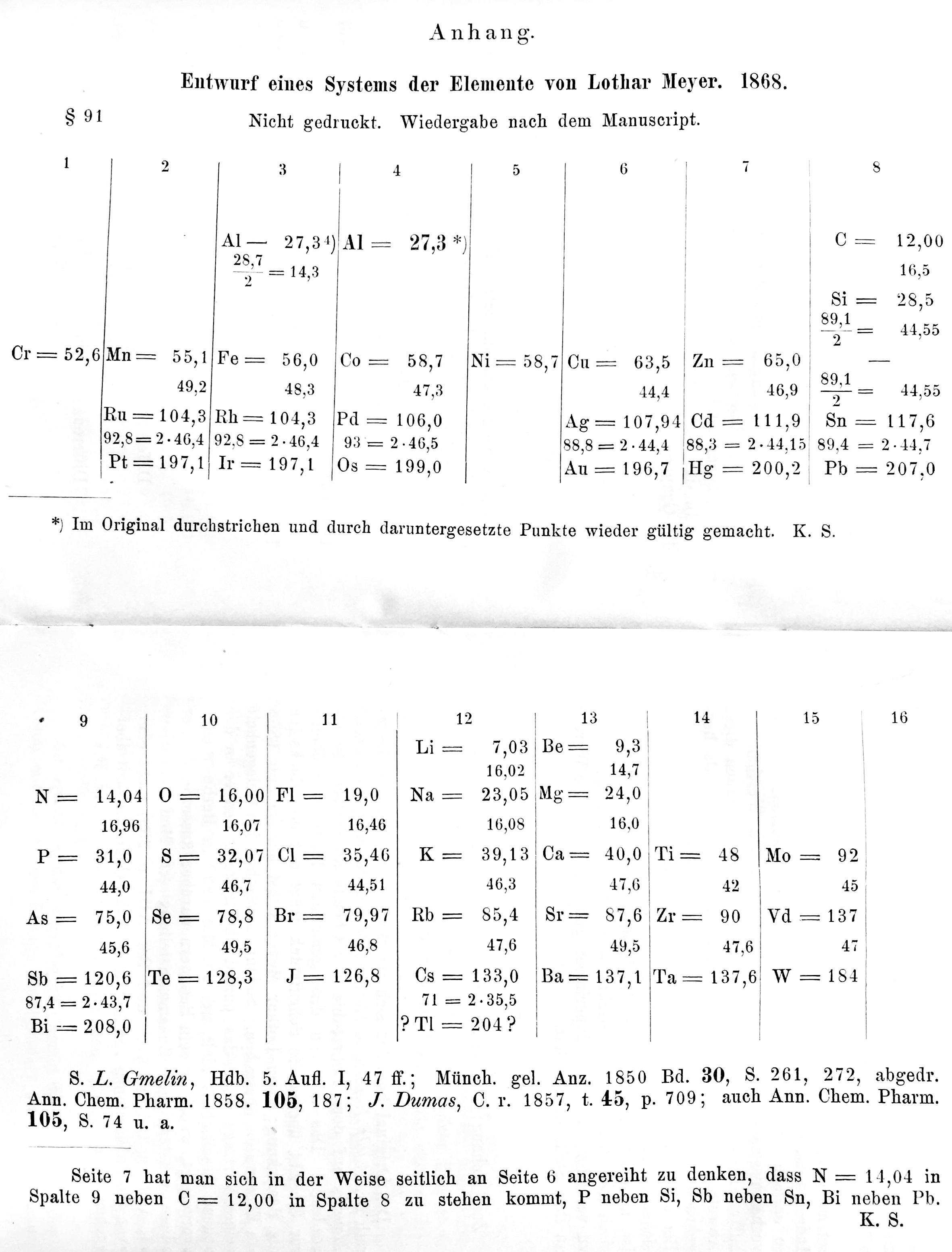 This image shows Meyer's first table of elements.1 The anti-error ethos of Neumann's seminar is visible from this table and Meyer’s other systematisations, as they show a heightened awareness of the quality of data. Note that from this first table onwards, Meyer reported the atomic weights up to two decimal points. Such a level of precision was unusual, as chemists tended to round off atomic weights. The high decimal points drew attention to cases where they were determined to a high degree of precision and distinguished them from the imprecise ones.
This image shows Meyer's first table of elements.1 The anti-error ethos of Neumann's seminar is visible from this table and Meyer’s other systematisations, as they show a heightened awareness of the quality of data. Note that from this first table onwards, Meyer reported the atomic weights up to two decimal points. Such a level of precision was unusual, as chemists tended to round off atomic weights. The high decimal points drew attention to cases where they were determined to a high degree of precision and distinguished them from the imprecise ones.
Meyer’s prioritisation of accurate experimental data also led him to exclude those chemical elements that were not well-characterised enough. In this table, Meyer’s goal was not to systematise all the elements, but to illustrate the numerical relations of only those elements that were well-known enough. The first table(s) included 28+16 elements. In each version, the number of elements increased only moderately (53 elements in the system of 1868, 56 elements in 1870 and 1872, and 64 in 1876). The moderate increase of elements forms a contrast especially with the approach of Mendeleev, who included 63 elements in his first system of 1869. Meyer had a good reason for excluding elements – he did not want to put the well-established data on the same line with more dubious kind.
Meyer’s first table included gaps which would be occupied by undiscovered elements. The 1860s saw the discovery of thallium, indium, caesium, and rubidium, so it was important for a system to take into account undiscovered elements. In the first system, Meyer extrapolated the atomic weights of several missing elements on the basis of the numerical differences between the known atomic weights. Above, it is noticeable that the owner of J.C. Buckmaster’s The Elements of Chemistry (1865) added tellurium to the author’s (incomplete) list.2


Meyer never published this system of 1868. It was found by his collaborator Karl Seubert, who published it after Meyer’s death in 1895.3
